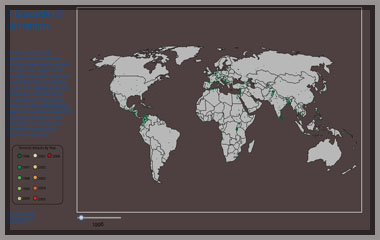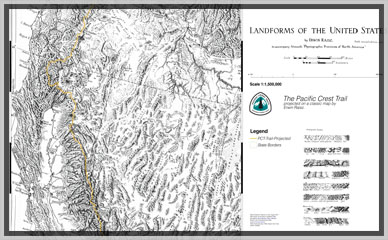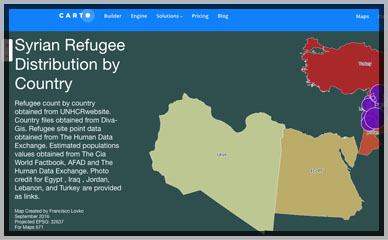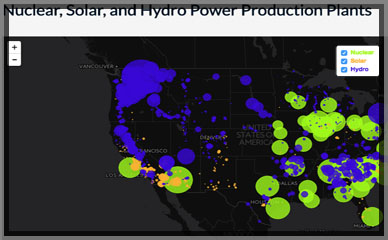
A Decade of Terrorism
The map was designed using D3 and uses world.geo.json file by Johan to create the base map. The map geospatially plots terrorist attacks as point features from 1996 through 2006. The map is defaulted to open with all points plotted in 2006. The viewer is afforded the ability to scroll through time series data. When the user progresses forward or backwards in time points will added or removed from the map. The viewer also has the ability to zoom in and drag the map to areas of particular interest. Additionally, the user can hover over each point to retrieve information about the attack if the data is available. The information window includes the following information about the attack: the country, city, year, the group responsible, and the number of casualties.
- See the map: A Decade of Terrorism
- Data Source: The Global Terrorism Database


